Attendance: 5
The morning began with Jason cleaning down the buffer shafts at both ends of the loco. All four were degreased with spray solvent, given a scrub with a wire bush to remove any hard deposits and finally wiped down. With a clean surface achieved, the shafts received a spray coating of grey primer. Carl was also on site and assised Jason attaching the handrails to the B end bonnet section then moved on to fitting the missing train reservoir pipes to the shut off cocks on the left hand side of each bufferbeam.
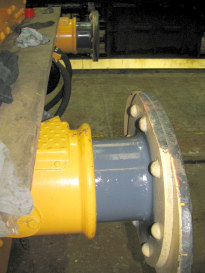 |
 |
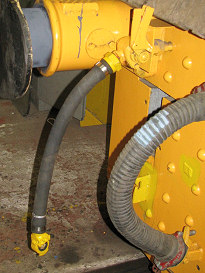 |
Buffer shafts in primer |
Carl fixing handrails |
Main Res pipe attached |
Jason then fitted the transmission breather pipe cap that had now been painted with green gloss. Rob Mason had now arrived and was test fitting one of the drivers seats to the runners he had fitted to the cab floor boards, these proved to be a loose fit due to wear and tear on runners and will have to be looked at a later date.
Next job was to align and drill holes into the newly fitted bufferbeam side plate brackets which had been cut and welded into place on the left hand B-End corner earlier in the week. Jason started with the lower plate, offering it up and marking out the brackets for the necessary holes, then drilled out the holes and mounted the first bufferbeam side plate onto the new brackets. Once happy, he went around the loco and fitted the remaining side plates apart from the left hand A-End set which are missing and will need replacements fabricating at a later date.
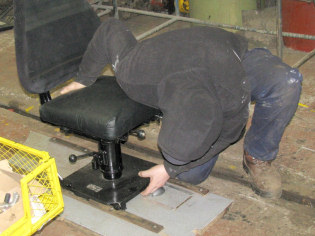 |
 |
Rob trying out drivers chair runners |
Jason drilling bufferbeam side panel brackets |
Alan Lee had now arrived by this time and needed to start the loco to carry out further testing. Once Ernest was running and sufficient air had built up the loco was moved outside. Meanwhile, Carl had found one of the shafts for the wiper motor mechanism and had fitted it along with a wiper blade.
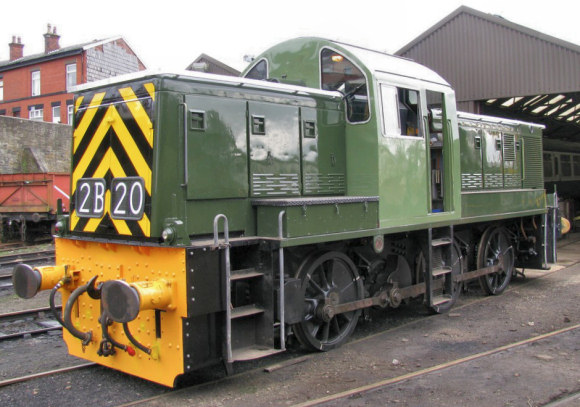 |
'Ernest' stood outside Buckley Wells Carriage & Wagon Works |
Rob had now turned his attention to the left hand side cab floor and, with the loco now outside, had taken his tools and work bench out of the shed so he could work alongside the loco. Alan and Carl were engaged in checking the function of the engine overspeed device, it was suspected that the fitted one might be faulty so the spare from the original power unit was brought out of stores and cleaned up for swapping with the faulty one. Alan was also making numerous adjustment to the engine governor, fine tuning the upper & lower ranges for engine throttle speed.
 |
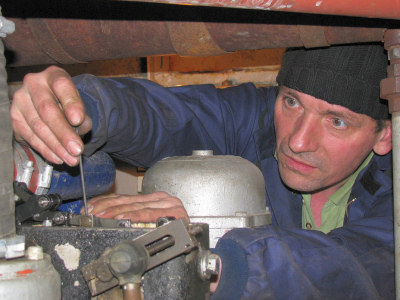 |
Rob at work on flooring |
Alan fine tuning power unit control systems |
Jason was going around the loco giving the tread plates on the steps a quick scrubbing down with a wire brush, while working away on the right hand A-end shunt steps a large area of rust was uncovered on the lower step platform. The loose rust was removed with a wire brush and the area sprayed with grey primer to protect the bare metal.
Mid afternoon saw Gilbert arrive to do some more painting, starting with flatting down some areas of green gloss around the A-end wasp stripe panel and the marker lights. Carl & Rob had been away sourcing some suitable wood to use for temporary step boards to go inside the door wells of the cab. The wooden boards will suffice for now but will be replaced with aluminium chequer plate at a later date.
 |
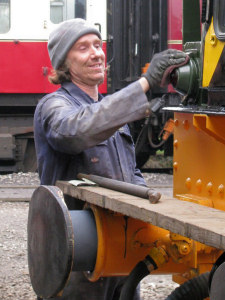 |
Newly installed temporary door recess flooring |
Gilbert flatting glosswork |
Alan had noticed that guards were needed for the cab heater elements so Jason was tasked with finding something suitable. A set of old guards were found, these were a bit rusty and so Jason drelled them up ready for painting. It was starting to get dark now as Gilbert went around and painted some of the grab rails around the shunt steps with white undercoat.
With time getting on, D9531 was started up and moved back inside the shed again, so ended another long day of work on the loco. Two full days remaining to the March diesel weekend, no pressure then!
< Prev | Workgroup Reports | Next >